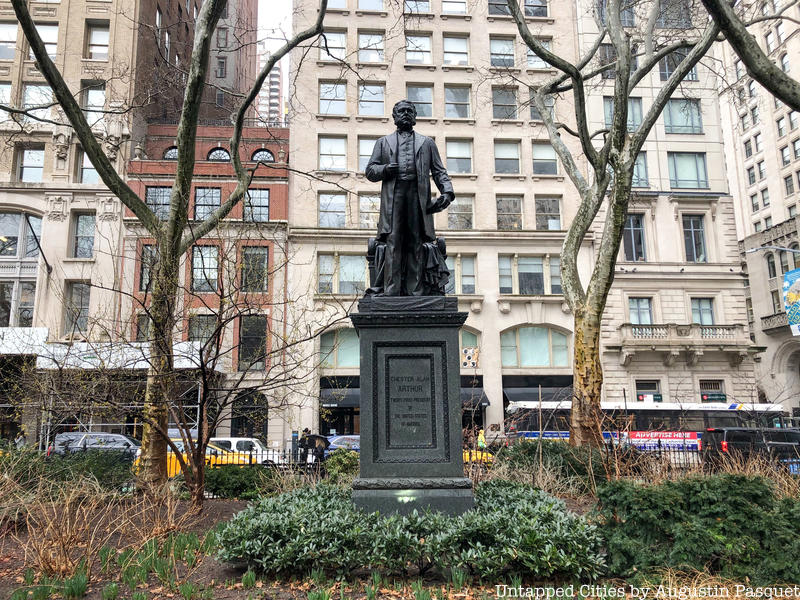6. Chester A. Arthur in Madison Square

When the first U.S. Census was taken in 1790 most of the residents were Dutch, English, Irish and German descent. Most of the population however were Africans forced into slavery. This number dropped after the slave trade was banned. Then, the Industrial Revolution saw thousands from Europe flocking to America to build factories, railroads, and canals. The Gold Rush of the 1850s drew thousands of Chinese to the West Coast while the Irish seeking refuge from the great famine came east. The rise of technology and steam powered ships made it cheaper and quicker to come to America although the Chinese were banned from entering for 60 years due to the Chinese Exclusion Act of May 6,1882. It was the first significant legislation restricting immigration into this country. President Chester A. Arthur signed the act, which today is a smear for the Capital District since he grew up in Troy, New York where he went to school and taught in the region. He attended Union College in Schenectady. His minster father also preached there and in Schenectady.
Still, Arthur also has a host of liberal activities including support of abolitionist Henry Clay and representing Elizabeth Jennings Graham, a black woman that was denied a seat on a streetcar in Troy in 1854 because she was black. After he won the case, the city’s streetcar lines were officially desegregated..
After just half a year as vice president of the United States in 1881, Arthur found himself President due to the assassination of his predecessor James A. Garfield. Arthur is remembered by historians for his push to reform tariffs, instituting an official navy, and a notable lack of corruption, during an era of corrupt administrations. He died less than a year out of office and was buried alongside his wife and next to his ancestors and family members at Albany Rural Cemetery. His house at 626 First Avenue in Troy sits vacant.
The sculpture of Arthur in Madison Square was sculpted by George Edwin Bissell in 1898.
Next check out 10 Surprising Sculptures You Wouldn’t Expect to see in Manhattan’s Public Spaces.





